Erhong Yang
Cross-domain Chinese Sentence Pattern Parsing
Feb 27, 2024Abstract:Sentence Pattern Structure (SPS) parsing is a syntactic analysis method primarily employed in language teaching.Existing SPS parsers rely heavily on textbook corpora for training, lacking cross-domain capability.To overcome this constraint, this paper proposes an innovative approach leveraging large language models (LLMs) within a self-training framework. Partial syntactic rules from a source domain are combined with target domain sentences to dynamically generate training data, enhancing the adaptability of the parser to diverse domains.Experiments conducted on textbook and news domains demonstrate the effectiveness of the proposed method, outperforming rule-based baselines by 1.68 points on F1 metrics.
OMGEval: An Open Multilingual Generative Evaluation Benchmark for Large Language Models
Feb 21, 2024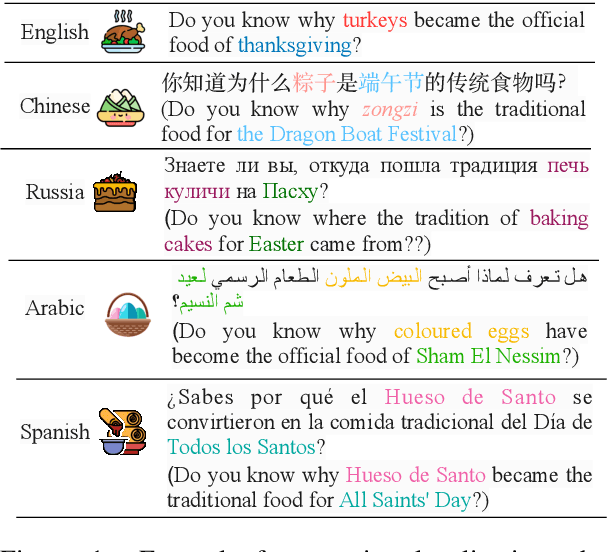
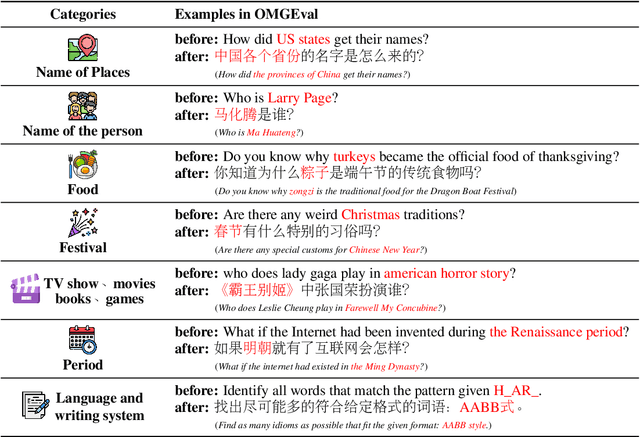

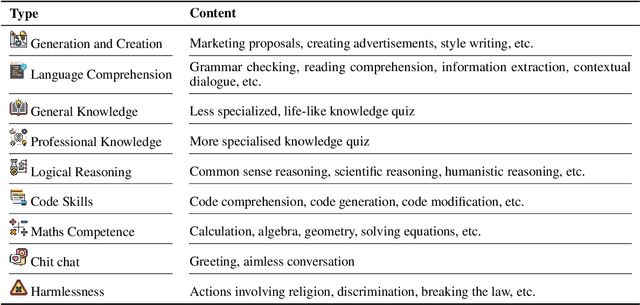
Abstract:Modern large language models (LLMs) should generally benefit individuals from various cultural backgrounds around the world. However, most recent advanced generative evaluation benchmarks tailed for LLMs mainly focus on English. To this end, we introduce OMGEval, the first Open-source Multilingual Generative test set that can assess the capability of LLMs in different languages. For each language, OMGEval provides 804 open-ended questions, covering a wide range of important capabilities of LLMs, such as general knowledge, logical reasoning, and so on. Each question is rigorously verified by human annotators. Notably, to sufficiently reflect the compatibility of LLMs in different cultural backgrounds, we perform localization for each non-English language. Specifically, the current version of OMGEval includes 5 languages (i.e., Zh, Ru, Fr, Es, Ar). Following AlpacaEval, we employ GPT-4 as the adjudicator to automatically score different model outputs, which is shown closely related to human evaluation. We evaluate several representative multilingual LLMs on the proposed OMGEval, which we believe will provide a valuable reference for the community to further understand and improve the multilingual capability of LLMs. OMGEval is available at https://github.com/blcuicall/OMGEval.
From Text to CQL: Bridging Natural Language and Corpus Search Engine
Feb 21, 2024



Abstract:Natural Language Processing (NLP) technologies have revolutionized the way we interact with information systems, with a significant focus on converting natural language queries into formal query languages such as SQL. However, less emphasis has been placed on the Corpus Query Language (CQL), a critical tool for linguistic research and detailed analysis within text corpora. The manual construction of CQL queries is a complex and time-intensive task that requires a great deal of expertise, which presents a notable challenge for both researchers and practitioners. This paper presents the first text-to-CQL task that aims to automate the translation of natural language into CQL. We present a comprehensive framework for this task, including a specifically curated large-scale dataset and methodologies leveraging large language models (LLMs) for effective text-to-CQL task. In addition, we established advanced evaluation metrics to assess the syntactic and semantic accuracy of the generated queries. We created innovative LLM-based conversion approaches and detailed experiments. The results demonstrate the efficacy of our methods and provide insights into the complexities of text-to-CQL task.
MCTS: A Multi-Reference Chinese Text Simplification Dataset
Jun 05, 2023Abstract:Text simplification aims to make the text easier to understand by applying rewriting transformations. There has been very little research on Chinese text simplification for a long time. The lack of generic evaluation data is an essential reason for this phenomenon. In this paper, we introduce MCTS, a multi-reference Chinese text simplification dataset. We describe the annotation process of the dataset and provide a detailed analysis of it. Furthermore, we evaluate the performance of some unsupervised methods and advanced large language models. We hope to build a basic understanding of Chinese text simplification through the foundational work and provide references for future research. We release our data at https://github.com/blcuicall/mcts.
Cost-efficient Crowdsourcing for Span-based Sequence Labeling: Worker Selection and Data Augmentation
May 11, 2023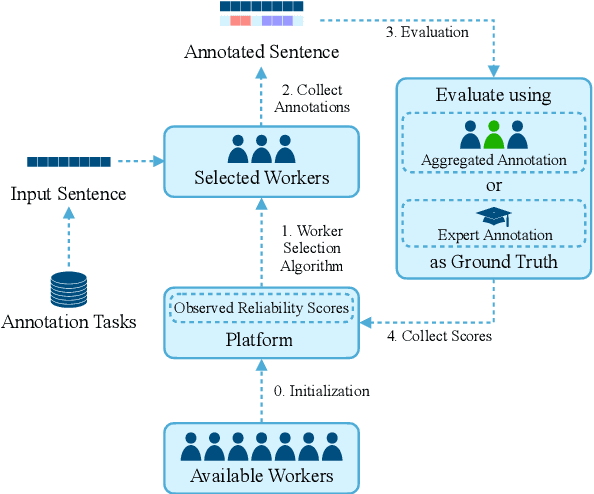


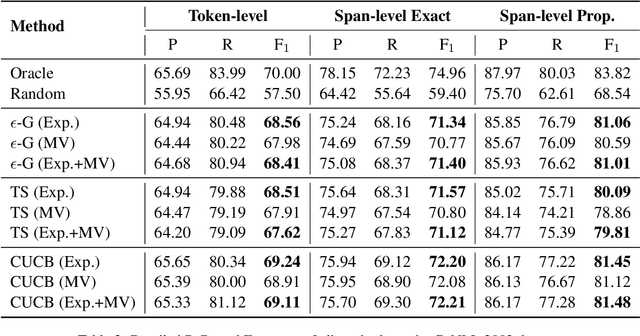
Abstract:This paper introduces a novel worker selection algorithm, enhancing annotation quality and reducing costs in challenging span-based sequence labeling tasks in Natural Language Processing (NLP). Unlike previous studies targeting simpler tasks, this study contends with the complexities of label interdependencies in sequence labeling tasks. The proposed algorithm utilizes a Combinatorial Multi-Armed Bandit (CMAB) approach for worker selection. The challenge of dealing with imbalanced and small-scale datasets, which hinders offline simulation of worker selection, is tackled using an innovative data augmentation method termed shifting, expanding, and shrinking (SES). The SES method is designed specifically for sequence labeling tasks. Rigorous testing on CoNLL 2003 NER and Chinese OEI datasets showcased the algorithm's efficiency, with an increase in F1 score up to 100.04% of the expert-only baseline, alongside cost savings up to 65.97%. The paper also encompasses a dataset-independent test emulating annotation evaluation through a Bernoulli distribution, which still led to an impressive 97.56% F1 score of the expert baseline and 59.88% cost savings. This research addresses and overcomes numerous obstacles in worker selection for complex NLP tasks.
Lexical Complexity Controlled Sentence Generation
Nov 26, 2022Abstract:Text generation rarely considers the control of lexical complexity, which limits its more comprehensive practical application. We introduce a novel task of lexical complexity controlled sentence generation, which aims at keywords to sentence generation with desired complexity levels. It has enormous potential in domains such as grade reading, language teaching and acquisition. The challenge of this task is to generate fluent sentences only using the words of given complexity levels. We propose a simple but effective approach for this task based on complexity embedding. Compared with potential solutions, our approach fuses the representations of the word complexity levels into the model to get better control of lexical complexity. And we demonstrate the feasibility of the approach for both training models from scratch and fine-tuning the pre-trained models. To facilitate the research, we develop two datasets in English and Chinese respectively, on which extensive experiments are conducted. Results show that our approach better controls lexical complexity and generates higher quality sentences than baseline methods.
COMPILING: A Benchmark Dataset for Chinese Complexity Controllable Definition Generation
Sep 29, 2022

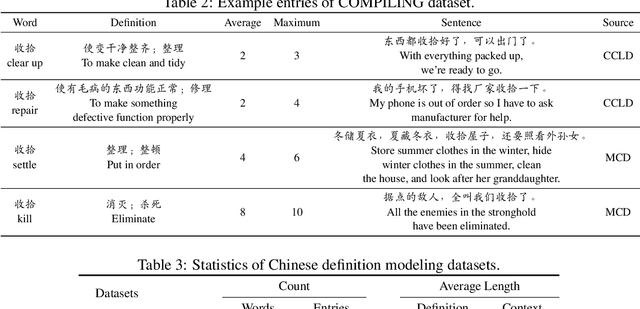

Abstract:The definition generation task aims to generate a word's definition within a specific context automatically. However, owing to the lack of datasets for different complexities, the definitions produced by models tend to keep the same complexity level. This paper proposes a novel task of generating definitions for a word with controllable complexity levels. Correspondingly, we introduce COMPILING, a dataset given detailed information about Chinese definitions, and each definition is labeled with its complexity levels. The COMPILING dataset includes 74,303 words and 106,882 definitions. To the best of our knowledge, it is the largest dataset of the Chinese definition generation task. We select various representative generation methods as baselines for this task and conduct evaluations, which illustrates that our dataset plays an outstanding role in assisting models in generating different complexity-level definitions. We believe that the COMPILING dataset will benefit further research in complexity controllable definition generation.
LitMind Dictionary: An Open-Source Online Dictionary
Apr 23, 2022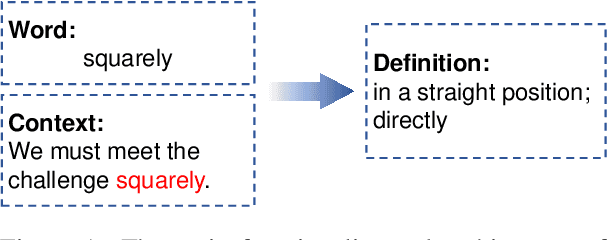
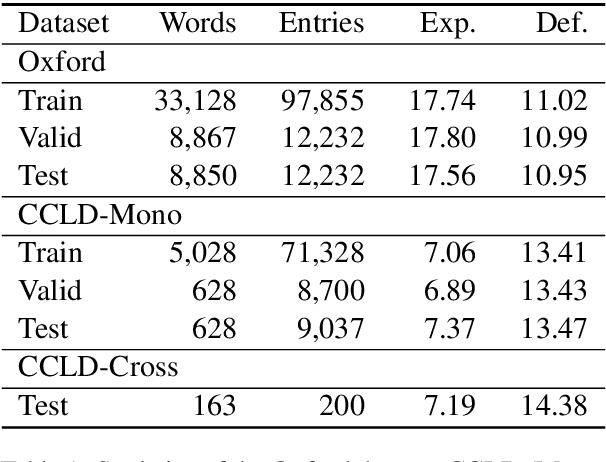
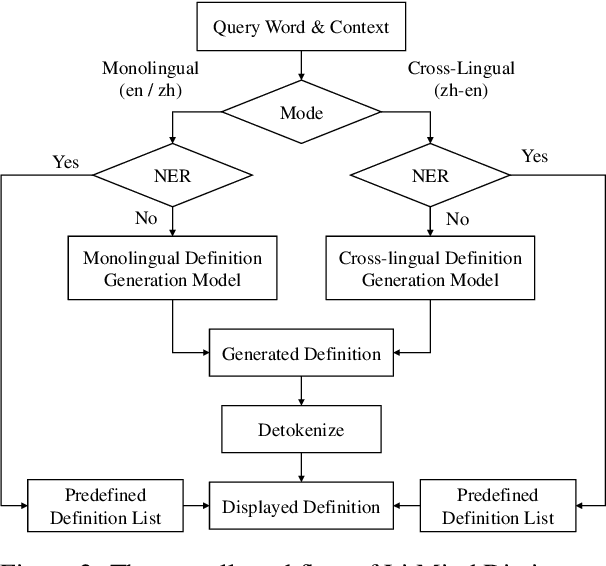
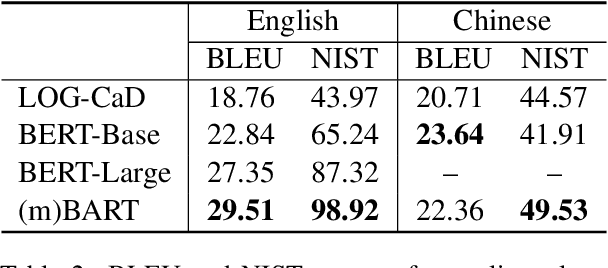
Abstract:Dictionaries can help language learners to learn vocabulary by providing definitions of words. Since traditional dictionaries present word senses as discrete items in predefined inventories, they fall short of flexibility, which is required in providing specific meanings of words in particular contexts. In this paper, we introduce the LitMind Dictionary (https://dictionary.litmind.ink), an open-source online generative dictionary that takes a word and context containing the word as input and automatically generates a definition as output. Incorporating state-of-the-art definition generation models, it supports not only Chinese and English, but also Chinese-English cross-lingual queries. Moreover, it has a user-friendly front-end design that can help users understand the query words quickly and easily. All the code and data are available at https://github.com/blcuicall/litmind-dictionary.
BLCU-ICALL at SemEval-2022 Task 1: Cross-Attention Multitasking Framework for Definition Modeling
Apr 16, 2022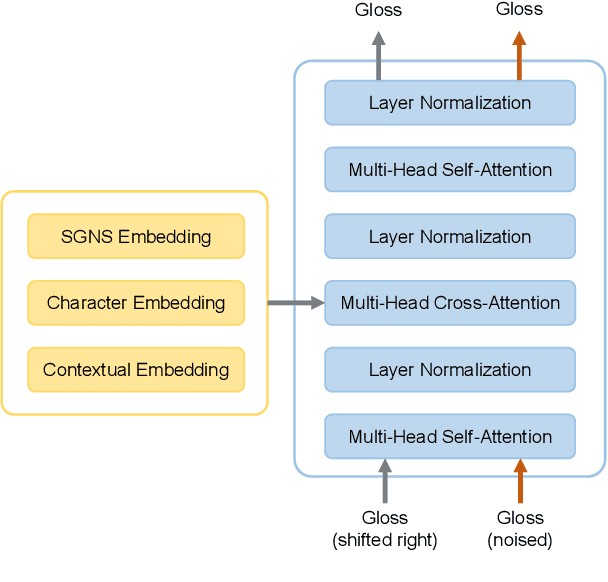

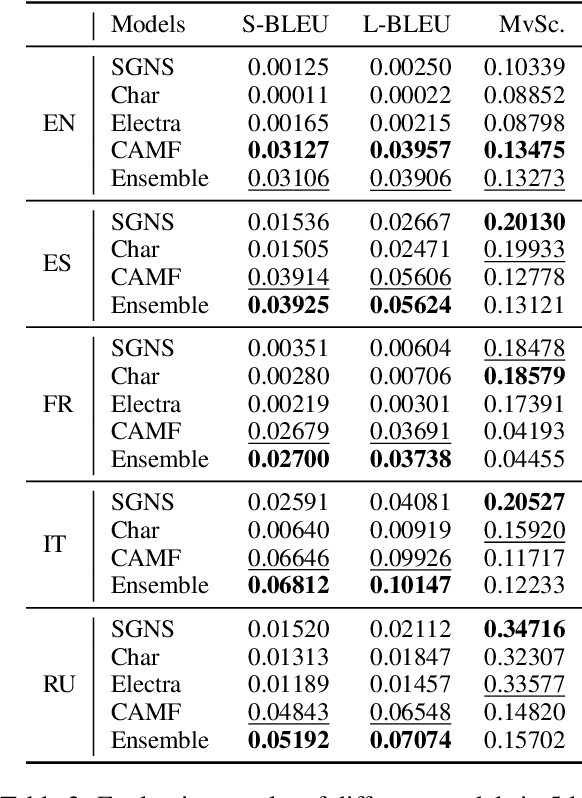
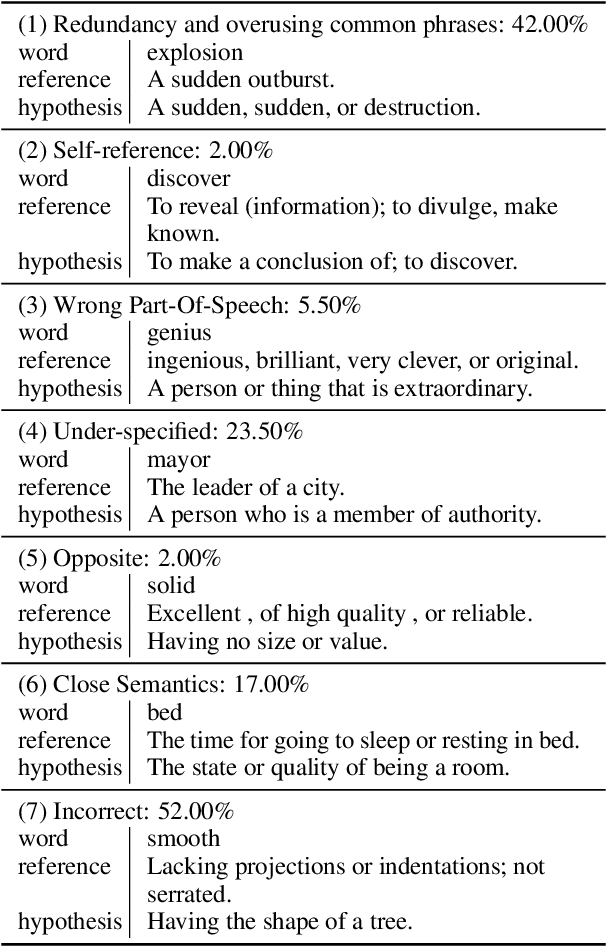
Abstract:This paper describes the BLCU-ICALL system used in the SemEval-2022 Task 1 Comparing Dictionaries and Word Embeddings, the Definition Modeling subtrack, achieving 1st on Italian, 2nd on Spanish and Russian, and 3rd on English and French. We propose a transformer-based multitasking framework to explore the task. The framework integrates multiple embedding architectures through the cross-attention mechanism, and captures the structure of glosses through a masking language model objective. Additionally, we also investigate a simple but effective model ensembling strategy to further improve the robustness. The evaluation results show the effectiveness of our solution. We release our code at: https://github.com/blcuicall/SemEval2022-Task1-DM.
Multitasking Framework for Unsupervised Simple Definition Generation
Mar 24, 2022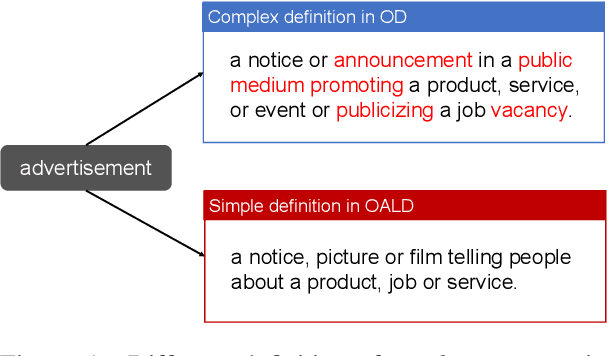

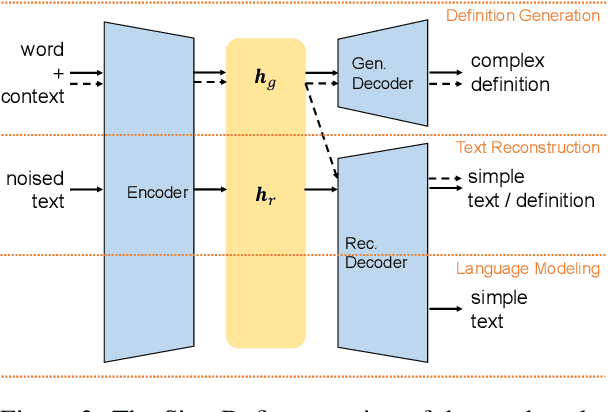

Abstract:The definition generation task can help language learners by providing explanations for unfamiliar words. This task has attracted much attention in recent years. We propose a novel task of Simple Definition Generation (SDG) to help language learners and low literacy readers. A significant challenge of this task is the lack of learner's dictionaries in many languages, and therefore the lack of data for supervised training. We explore this task and propose a multitasking framework SimpDefiner that only requires a standard dictionary with complex definitions and a corpus containing arbitrary simple texts. We disentangle the complexity factors from the text by carefully designing a parameter sharing scheme between two decoders. By jointly training these components, the framework can generate both complex and simple definitions simultaneously. We demonstrate that the framework can generate relevant, simple definitions for the target words through automatic and manual evaluations on English and Chinese datasets. Our method outperforms the baseline model by a 1.77 SARI score on the English dataset, and raises the proportion of the low level (HSK level 1-3) words in Chinese definitions by 3.87%.
 Add to Chrome
Add to Chrome Add to Firefox
Add to Firefox Add to Edge
Add to Edge